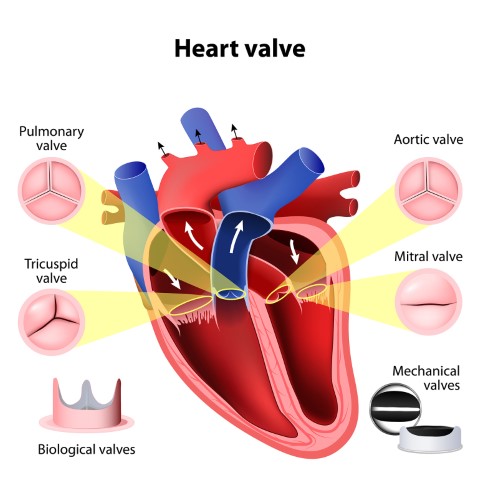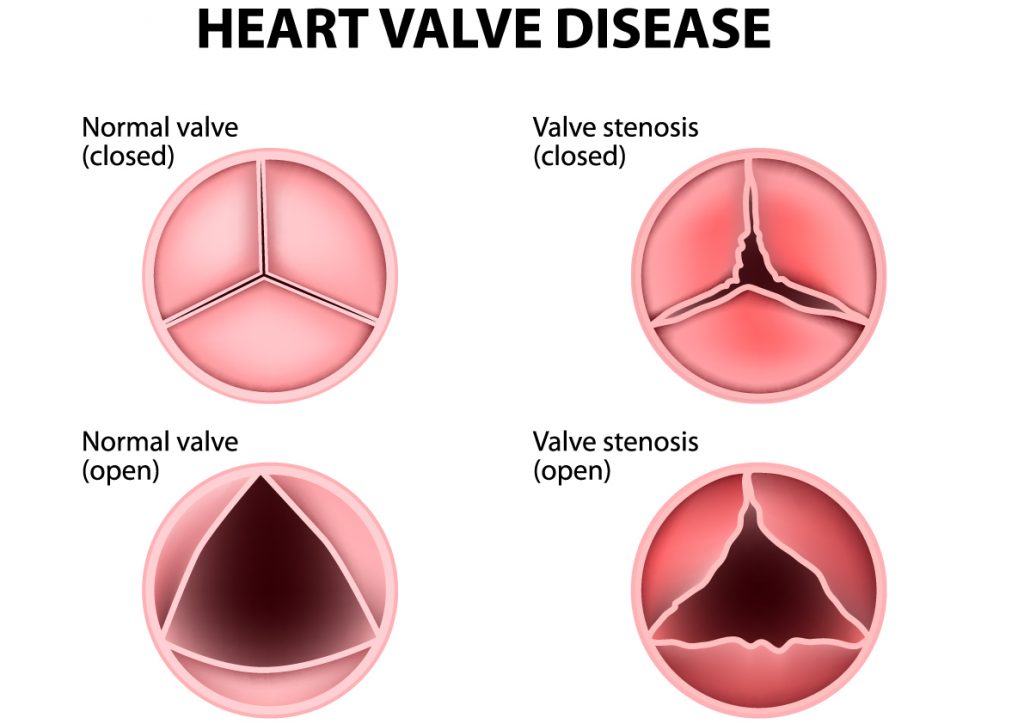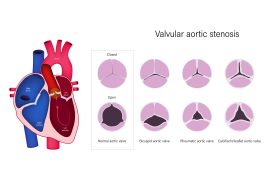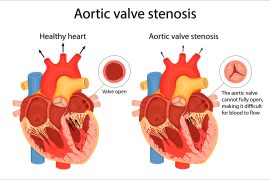The human heart has four chambers, with the upper chambers being the left and right atrium and the lower chambers being the left and right ventricles. The heart valves are present at the end of each chamber and they maintain the one-way blood flow from the heart to the lungs and the rest of the body. The four different valves are – Pulmonary Valve, Tricuspid Valve, Aortic Valve and Mitral Valve.
The tricuspid valve is placed between the right atrium and right ventricle. Through this valve, blood flows to the right ventricle. The function of the pulmonary valve is to control the flow of blood between the right ventricle and the lungs. The mitral valve is positioned between the left atrium and left ventricle and allows the blood to flow between them. The aortic valve controls the blood flow from the left ventricle to the aorta. The aorta is the main artery of the body, from which blood flows to the other parts of the body.
What are Valvular Diseases?
Valvular diseases, commonly known as heart valve diseases, occur when one or more of the heart valves do not open or close properly, affecting the blood flow. When more than one valve is affected, it is known as Multiple Valvular Heart Disease. The different types of valvular diseases are:



Stenosis:
In this condition, the heart valves stiffen, leading to the narrowing of the valves. This in turn restricts the blood flow from the valves to the other organs. It keeps the valve from opening fully to allow smooth blood flow, due to which an inadequate amount of blood is supplied to the body. In severe cases, the valve opening may completely close, due to which the blood flow is blocked.
- Tricuspid valve stenosis: In this condition, the blood is unable to flow from the right atrium to the right ventricle, causing the atrium to enlarge. This affects the blood pressure and flows in the surrounding chambers. It can also cause the right ventricle to shrink or become smaller, restricting the blood circulation to the lungs.
- Pulmonary valve stenosis: If the pulmonary valve narrows, the blood flow from the right ventricle to the lungs is restricted, due to which oxygen-rich blood cannot be pumped to the rest of the body. In this condition, the right ventricle might have to compensate by pumping blood harder through the narrowed valve, increasing the pressure on the heart.
- Mitral valve stenosis: In this condition, the blood flow from the left atrium to the left ventricle is reduced, causing fatigue and shortness of breath. It may also cause enlargement of the atrium and fluid build-up in the lungs.
- Aortic valve stenosis: This is one of the most common heart conditions. In this condition, the blood flow from the heart to the aorta and the rest of the body is restricted. Due to this, the left ventricle has to pump harder to ensure blood flow to the aortic valve. This may also lead to the thickening of the left ventricle.



Prolapse:
Valvular prolapse is a condition in which the valve flaps slip out of place or bulge. This can lead to the valves being unable to close properly. Due to this, blood may flow backwards through the half-closed valve, disrupting the one-way blood flow.
- Mitral valve prolapse: Also known as Barlow’s syndrome, click-murmur syndrome and floppy-valve syndrome, this condition prevents the valve from closing evenly. The mitral valves may also bulge upwards into the atrium when the two ventricles contracts. Due to this, a small amount of blood may flow backwards through the valve.
- Tricuspid, Pulmonary and Aortic valve prolapse: These prolapses are less common as compared to Mitral valve prolapse. In the above-mentioned conditions, the leaflets/flaps of the valves do not close properly to form a tight seal.
Regurgitation:
Regurgitation happens when the valve doesn’t close properly, allowing the blood to flow backwards. This disrupts the one-way blood flow and puts a strain on the heart. This reduces the efficiency of the heart in pumping oxygen-rich blood to the rest of the body.
- Tricuspid valve regurgitation: In this condition, the blood pumped from the right ventricle to the lungs may flow back to the right atrium, leading to the enlargement of the atrium.
- Pulmonary valve regurgitation: In pulmonary valve regurgitation, the pulmonary valve doesn’t close properly, leading to the blood flowing backwards from the lungs to the heart. This backward blood flow may cause oxygen-rich blood to blend with oxygen-poor blood, reducing the availability of oxygen-rich blood to the rest of the body.
- Mitral valve regurgitation: Mitral valve regurgitation can be a result of mitral valve prolapse. In this condition, blood leaks backwards into the left atrium through the mitral valve. In severe cases, this condition may lead to the enlargement of the atrium and lung congestion.
- Aortic valve regurgitation: In this condition, blood leaks backwards from the aorta to the left ventricle, due to which the body does not get an adequate amount of blood, leading to the heart pumping harder to compensate. This may cause the thickening of the left ventricle.
Symptoms of Valvular Heart Diseases:
Some common symptoms of heart valve diseases are:
- Discomfort or tightness in the chest.
- Palpitations are a common symptom of heart valve diseases, which may cause the heart to enlarge, leading to irregular heartbeats (arrhythmia).
- Shortness of breath – as valvular diseases disrupt the flow of oxygen-rich blood to the body, causing breathlessness.
- Fatigue and weakness
- Dizziness and fainting
- Swelling occurs when the blood flows backwards, leading to fluid buildup and congestion, which in turn leads to swollen abdomen and feet.
Though the symptoms may slightly vary for different valvular diseases, it is important to be mindful of them and connect with your doctor even if you experience the mildest of symptoms. Though severe conditions may require surgical procedures, a few lifestyle changes will help keep these heart valve conditions at bay. Be aware and take precautions!




